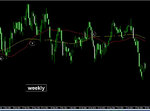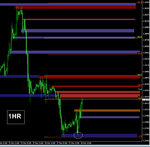bbmac
Veteren member
- Messages
- 3,584
- Likes
- 789
Some observations;
1. TA is not an exact science.
2. See 1.above - this notwithstanding - some analysis /use of TA is just plain wrong.
3. Not all PA can tell you what the greater probability of future PA is.
4. The greater probability doesn't always play out.
5. PA alone - on all instruments, cannot tell you everything you may need/want to know.
6. Support/Resistance should be more accurately called 'potential supp/res.'
7. The more times pot supp/res gets hi the generally weaker it becomes in it's ability to act as such on a subsequent test.
8. Of all pot supp/res factors - the most important are the previous price pivots.
9. It is how price arrives at re PA as well as PA at pot supp/res that can (not always) give a clue as to the greater probability - ie break or bounce at such pot supp/res.
10. Conversely to part of point 9. above - it is how price bounces from pot supp/res that can tell you how strong it is.
G/L
1. TA is not an exact science.
2. See 1.above - this notwithstanding - some analysis /use of TA is just plain wrong.
3. Not all PA can tell you what the greater probability of future PA is.
4. The greater probability doesn't always play out.
5. PA alone - on all instruments, cannot tell you everything you may need/want to know.
6. Support/Resistance should be more accurately called 'potential supp/res.'
7. The more times pot supp/res gets hi the generally weaker it becomes in it's ability to act as such on a subsequent test.
8. Of all pot supp/res factors - the most important are the previous price pivots.
9. It is how price arrives at re PA as well as PA at pot supp/res that can (not always) give a clue as to the greater probability - ie break or bounce at such pot supp/res.
10. Conversely to part of point 9. above - it is how price bounces from pot supp/res that can tell you how strong it is.
G/L
Last edited:






